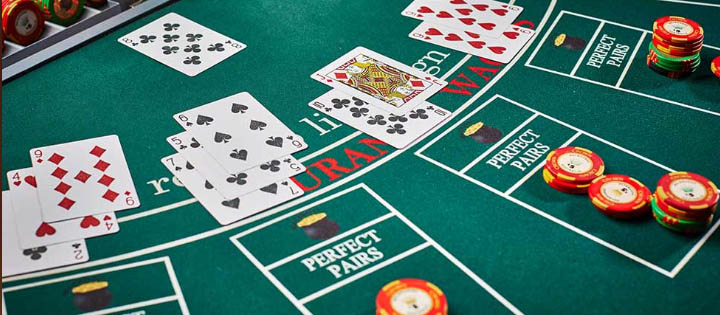Last Updated on 12 May 2016 by Nicholas Lim
 French Ferme and Chemin de Fer are believed to be the first ancestors of modern day Black Jack. French Ferme and Chemin de Fer were both very popular games in France in the 1700’s. Over the next fifty years the games popularity spread throughout Europe with a number of new names and distinctive variations before gaining any attention in North America. It wasn’t until the late 1750’s when European sailors in US ports began to create an interest in the game, which in those days was called Vingt et Un or Twenty One. From those days forward the love for the game of Black Jack spread across America and by the start of the 20th Century the game was and is commonly played in most casinos.
French Ferme and Chemin de Fer are believed to be the first ancestors of modern day Black Jack. French Ferme and Chemin de Fer were both very popular games in France in the 1700’s. Over the next fifty years the games popularity spread throughout Europe with a number of new names and distinctive variations before gaining any attention in North America. It wasn’t until the late 1750’s when European sailors in US ports began to create an interest in the game, which in those days was called Vingt et Un or Twenty One. From those days forward the love for the game of Black Jack spread across America and by the start of the 20th Century the game was and is commonly played in most casinos.
Today Millions of people from all over the globe play and enjoy numerous variations of the game we know as Black Jack. The World Series of Blackjack and Las Vegas Hilton’s Million Dollar Blackjack Tournament are just a few of the major tournaments that reflect the popularity of the game.
Black Jack Objective
Although Black Jack comes in many variations the premise of the game remains the same. The objective is to be holding a hand valued at 21, or to be holding a hand valuing more than the dealers hand without exceeding 21. If the player or the dealer exceed 21 they automatically loose, this is commonly known as “busting”.
If a players hand values more than the dealers hand without exceeding 21 the player wins, however if the dealers hand values more than the players hand without exceeding 21 the dealer wins. When the dealer and the player tie, this is known as a push or a stand off and nobody wins.
Black Jack Basics
It is important to remember that many different variations of Black Jack exist and that the rules can change from casino to casino, or from table to table. We suggest that before you make any real money wagers that you familiarize yourself with the exact table rules. It is also very important to note that most Black Jack tables accommodate up to eight players, but the player is only betting against the dealer. Although card counters and professional Black Jack players pay close attention to the actions and outcomes of the other players, it is suggested that beginners stick to the basic strategy tables and not concern themselves too much with the other players on the table.
Card & Hand Values
In a game of Black Jack the numbered cards are always counted at their face value. For example an 8 is valued at 8, a 9 is valued at 9, a 10 is valued at 10, and so on. Picture cards, the Jack, Queen, and King, are always valued at 10, and an Ace is always valued at 11 unless the hand totals more than 21, in this case an Ace is valued at 1. A hand that is made up of an Ace valuing 11 is known as a soft hand, and a hand containing an Ace valued at 1 is known as a hard hand.
Hand Totals
Unlike many other casino games in the game of Black Jack the cards suit (spades, clubs, hearts, and diamonds) is not considered, each suit is of equal value. Therefore the value of a hand is simply just the combined value of all of the cards.
If the first two cards dealt to a player consist of an ace and a card valuing 10, this is known as a Black Jack or a Natural and the player automatically wins, unless the dealer also has a Black Jack. Typically a Black Jack plays the player 1.5 to 1.
Black Jack winner
If the value of the players hand is higher than the value of the dealer’s hand without going over 21 the player wins. In the case where a player and dealer tie nobody wins, this situation is known as a push or a stand off.
